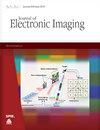用于人群计数的注意力注入式规模聚合网络
IF 1
4区 计算机科学
Q4 ENGINEERING, ELECTRICAL & ELECTRONIC
引用次数: 0
摘要
人群计数在公共安全管理、视频监控和应急响应等领域受到广泛关注。目前,背景干扰和头部规模变化仍是难以解决的问题。针对上述问题,我们提出了一种注意力注入式规模聚合网络(ASANet)。ASANet 由三部分组成:浅层特征注意网络(SFAN)、多层次特征聚合(MLFA)模块和密度图生成网络(DMG)。SFAN 通过在截断的 VGG16 结构中交叉注入注意力模块,有效克服了杂乱背景带来的噪声影响。为了充分利用不同位置特征层中蕴含的多尺度人群信息,我们在 MLFA 模块中密集连接了多层特征图,以解决尺度变化问题。此外,为了捕捉大规模的头部信息,DMG 网络引入了连续的扩张卷积层,进一步扩大了模型的感受野,从而提高了人群计数的准确性。我们在五个公开数据集(ShanghaiTech Part_A、ShanghaiTech Part_B、UCF_QNRF、UCF_CC_50、JHU-Crowd++)上进行了大量实验,结果表明 ASANet 在计数方面优于大多数现有方法,同时在处理不同场景的背景噪声方面也表现出令人满意的优势。本文章由计算机程序翻译,如有差异,请以英文原文为准。
Attention-injective scale aggregation network for crowd counting
Crowd counting has gained widespread attention in the fields of public safety management, video surveillance, and emergency response. Currently, background interference and scale variation of the head are still intractable problems. We propose an attention-injective scale aggregation network (ASANet) to cope with the above problems. ASANet consists of three parts: shallow feature attention network (SFAN), multi-level feature aggregation (MLFA) module, and density map generation (DMG) network. SFAN effectively overcomes the noise impact of a cluttered background by cross-injecting the attention module in the truncated VGG16 structure. To fully utilize the multi-scale crowd information embedded in the feature layers at different positions, we densely connect the multi-layer feature maps in the MLFA module to solve the scale variation problem. In addition, to capture large-scale head information, the DMG network introduces successive dilated convolutional layers to further expand the receptive field of the model, thus improving the accuracy of crowd counting. We conduct extensive experiments on five public datasets (ShanghaiTech Part_A, ShanghaiTech Part_B, UCF_QNRF, UCF_CC_50, JHU-Crowd++), and the results show that ASANet outperforms most of the existing methods in terms of counting and at the same time demonstrates satisfactory superiority in dealing with background noise in different scenes.
求助全文
通过发布文献求助,成功后即可免费获取论文全文。
去求助
来源期刊

Journal of Electronic Imaging
工程技术-成像科学与照相技术
CiteScore
1.70
自引率
27.30%
发文量
341
审稿时长
4.0 months
期刊介绍:
The Journal of Electronic Imaging publishes peer-reviewed papers in all technology areas that make up the field of electronic imaging and are normally considered in the design, engineering, and applications of electronic imaging systems.
 求助内容:
求助内容: 应助结果提醒方式:
应助结果提醒方式:


